A wonderful video on the basic knowledge around spinal cord. very nice YouTube channel too if you want to subscribe.
Sunday 29 December 2013
Friday 27 December 2013
eorthopod.com

The website eorthopod.com offer you "clear, accurate understandable information about your orthopaedic condition. Start here if you are interested in learning more about the anatomy and cause of your condition, how your doctor will make the diagnosis and what treatment options are available to you."
(suggested to me by my classmate Bita Loftalief)
(suggested to me by my classmate Bita Loftalief)
educata.com

We are clinicians
We’d move heaven and earth for the benefit of our patients
We are busy
And don’t want to waste time collecting education without a purpose
Our education has a purpose – to improve our patient care.
And, we offer evidence of that!
We are curious
And, maybe a bit non-traditional.
And, yet we are different from each other.
We come from different clinical backgrounds and we like our differences!
electrotherapy.org
Electrotherapy on the Web provides current, non commercial information on various aspects of Electrotherapy. It is not presented as a replacement for current texts but attempts to provide an independent view of the current state of the art. The range of pages and topics continues to expand, and some of the long standing pages get updated whenever I can. There are still some new pages to write and new developments to add all the time.
The website is sponsored by Indiba Activ, to whom grateful thanks are extended.
Thursday 26 December 2013
Stroke Survivor Learns How to Use Hand
With the help of the electric impulses of a Ness H200 Hand Rehabilitation System (made by Bioness) applied to stroke survivor's arm, his hand is able to open and grasp pegs on a peg board. Read more about his stroke recovery and rehabilitation at http://www.strokesurvivorblog.com/.
Monday 23 December 2013
Anatomy of the brain

A beautiful section in Mayfield Clinic website dedicated in the anatomy of the brain. Presented in a simple and easy to understand way with beautiful pictures.
Suggested by my classmate Bita Loftalief.
Suggested by my classmate Bita Loftalief.
Sunday 15 December 2013
Neurology overview

Here is an overview all all the subjects I covered in my first 2 years of my studies regarding Neurology. Subjects included:
Part 1
Overview; The somatosensory system; The motor system; Spinal anatomy and syndromes; The autonomic nervous system
Part 2
The basal ganglia; The cerebellum; Behavioral neurology; States of consciousness; The cranial nerves, the visual system, the facial and bulbar muscles; Acquired brain injury; Cerebrovascular accident / stroke; Multiple sclerosis
This work is based on the material provided to me by my professor in Neurology Jaap Baker (MD), the Vander's Human Physiology book (Widmaier et al, McGraw-Hill International Edition, NY, 12th ed.), the Physical Management for Neurological Conditions book (Stokes etl, Churchill Livingstone, UK, 3rd ed.), variable internet sources as well as my own work.
Tuesday 10 December 2013
International perspectives on spinal cord injury

New guidelines published by WHO:
"Every year between 250 000 and 500 000 people suffer a spinal cord injury, with road traffic crashes, falls and violence as the three leading causes. People with spinal cord injury are two to five times more likely to die prematurely. They also have lower rates of school enrollment and economic participation than people without such injuries. Spinal cord injury has costly consequences for the individual and society, but it is preventable, survivable and need not preclude good health and social inclusion. Ensuring an adequate medical and rehabilitation response, followed by supportive services and accessible environments, can help minimize the disruption to people with spinal cord injury and their families.
The aims of International perspectives on spinal cord injury are to:
• assemble and summarize information on spinal cord injury, in particular the epidemiology, services, interventions and policies that are relevant, together with the lived experience of people with spinal cord injury;
• make recommendations for actions based on this evidence that are consistent with the aspirations for people with disabilities as expressed in the Convention on the Rights of Persons with Disabilities."
Monday 9 December 2013
Request for review of Chiropractic & Osteopathic Boards of Australia

Friends of Science in Medcine made two submissions to the Australian Health Practitioner Regulation Agency (AHPRA) requesting reviews of the actions of the Chiropractic Board of Australia (CBA) and the Osteopathic Board of Australia (OBA). The reports raised serious questions about the integrity of both the CBA and the OBA.
Consequently, their ability to discharge their statutory obligation to protect the public from inappropriate and unjustifiable behaviour on the part of many of their registrants was also brought into question.
A review of the 360 courses approved by the CBA for Continuing Professional Development (CPD) identified that up to one-third of courses were based on pseudoscience or made exaggerated claims of efficacy.
'Cranial osteopathy' is a belief that there is a 'cranial rhythm' in the cranium, sacrum, cerebrospinal fluid and membranes enveloping the 'craniosacral system'; that they can be detected and measured only by their practitioner’s hands; and that good health requires the 'balance' and 'flow' of this rhythm. FSM identified a number of 'cranial osteopathy' courses for common childhood conditions such as Attention Deficit Hyperactivity Disorder (ADHD), asthma, allergies, bed-wetting, colic and ear infection, all of which are commonly referred to on osteopathic websites as conditions amenable to cranial manipulation. Other courses identified include obstetrics and gynaecology, paediatrics, visceral osteopathy and osteopathic neurology.
FSM asked AHPRA to investigate the CBA and the OBA and to seriously consider dismissing their current Boards.
Both Victoria University and RMIT osteopathy degrees promote cranial osteopathy.
Wednesday 9 October 2013
Thursday 12 September 2013
PhysioTutors: Anatomy - Planes & Axis
In this video Kai from PhysioTutors talks you through the different anatomical planes and corresponding axis.
Wednesday 11 September 2013
PhysioTutors: Patient History and RPS-Form
In this video Andreas from PhysioTutors explains you a way of how to use the RPS-Form of the ICF framework in your patient history taking.
PhysioTutors
I am very glad and proud of presenting you the PhysioTutors!
Andreas and Kai, two of my best classmates at the European School of Physiotherapy, have just created a YouTube channel with some amazing educational videos for tutoring students of the school but also everyone interested in the amazing profession of Physical Therapy. My blog will be hosting videos from their channel and I have already created a separate section for this. What you can find there: hints and tips on how take your first complete patient history, anatomy tutorials, assessment tests and tricks and many many more.
This is a huge project that just started and I wish them all the best. I wish them to make as big as their ambition for that! Well done guys... and thank you for this collaboration.
Andreas Heck

My name is Andreas Heck and I was born and raised in Germany. I also spent most of my time there, though I did a semester abroad in the United States where I developed the idea of studying Physiotherapy.
I had two destinations in mind: Boston and Amsterdam....I ended up in Amsterdam.I am now a second-year-student at the European School of Physiotherapy.
The opportunity of tutoring first-year-students at school led me to creating the youtube channel not only for our tutoring-class but for everyone to benefit from what we have learned.
Sharing is caring so feel free to subscribe and discuss with us in the comments!
Kai Sigel
I´m Kai Sigel and I am German as well. After finishing German high school (gymnasium) I followed my father’s advice to discard the idea of going into medicine and studied Business Information Systems at the “Duale Hochschule Baden-Württemberg” in Stuttgart.
After getting my bachelor’s degree, I have worked in the sales and marketing department of a bigger German company as International E-Procurement Project Manager for almost three years.
Yet still, there was this longing in the back of my mind to go into a branch, in which I could help people, have closer personal connections and where my true passion and interests lie: sports and health!
So I quit my job from one day to another, packed my backpack and travelled around the world for almost a year and came back full of energy to start a “new life” in Amsterdam to pursue my passion at the European School of Physiotherapy in Amsterdam.
Tuesday 10 September 2013
Murderball
Murderball is a 2005 American documentary film about tetraplegic athletes who play wheelchair rugby. It centers on the rivalry between the Canadian and U.S. teams leading up to the 2004 Paralympic Games.
You MUST watch it if you want to work with these guys!!!
Saturday 7 September 2013
The desire to do something greater in your life
When Kyle Maynard was 14 years old, he put his own socks on for the first time -- not an easy thing to do for a young man with virtually no arms and no legs. The first sock took him 30 minutes. The second one took him 15 minutes. Facing challenges and succeeding has been the hallmark of the life of Kyle Maynard, who made a name for himself into a high school wrestling champ and now as an adult, looks to inspire others with what he can do. ESPN has the story of Kyle's riskiest challenge ever... a transformative moment... for a guy who now gets his socks on... in 60 seconds.
Saturday 31 August 2013
A circus and performing arts camp
The Camp Winnarainbow Kids Camp program is driven by its two core philosophies (The Show Show and The Life Show) and all of its activities are designed to reflect their goals.
The Show Show
Our performance philosophy emphasizes taking risks in a physically and emotionally safe environment. Drawing from the world of circus and theatrical arts, we teach timing, balance, and a sense of humor. We honor the creative spirit of each child in an atmosphere of approval and mutual encouragement.
The Life Show
Camp Winnarainbow provides a training ground to nurture leaders for a peaceful, harmonious and sustainable world by teaching responsibility for one’s own behavior and developing confidence, inner security and appropriate self-expression. We encourage respect for oneself, others, and the environment while valuing the uniqueness of each individual, within the diversity of racial, cultural, economic, and religious backgrounds that comprise our camp community.
Friday 30 August 2013
Restless Limb Syndrome

What this guys has written in this post is so inspiring..! And as I always say... you can learn so many things from people with a kind of paralysis... you can get so much energy from them..! It is like they turned their disability into a blessing..!
Patch Adams - the representative of optimism
- ...and how do you keep your optimism Doctor..?
- hmmm... let me tell you this... I have never done anything hard in my life... I have never had any struggle... there is no tension in my life... I believe that if you are you, as the designer made you, made your person good, and then use that person as you decide... is this gonna be hard? How the hell can this be hard..? I have not watched TV for 40 years, I am reading 100-150 amazing books per year, I am exercising 1 hour per day, I love my life, my sons, my work..! Hard is doing what you are not! Hard is working in a job you hate, when you look in the mirror and you do not go "WOW!". When you love yourself, whatever anyone says about you... you do not care... you don't even think about it... because you love yourself and you are wondering how to spend it..!
Visit http://patchadams.org/.
Wednesday 28 August 2013
RadioArt - The Art of Antistress Music

Do you need to take some rest and relax from your stressful studying times? Listen to this wonderful radio station.
Master in Music Therapy

Barcelona
INTER-UNIVERSITY MASTERS
IDEC-Pompeu Fabra University
Blanquerna-Ramon Llull University
The programme aims to train specialist music therapists so that they can work in a wide range of situations in both education and healthcare. Our philosophy is based on the premise that the music therapist is a person and a professional with a strong connection to music; someone who is committed to using it for healing purposes, to help people who have special requirements and/or who need special support. The knowledge gained by students on this master should leave them prepared and professionally competent, while also maximising personal growth. This is a university degree and therefore aims to provide future specialists with the knowledge and theoretical and practical competencies necessary for professional practice, as well as the methodological rigour and spirit of constant perfectionism that will help them to further develop this profession, whether in practice or in research.
Potential candidates
The course is mainly designed for people working in the fields of education, health and/or music: teachers (pre-school, primary, secondary, special needs and music teaching), speech therapists, physiotherapists, nurses, community workers, psychologists, educationalists, school counsellors, doctors and qualified musicians.
Sunday 25 August 2013
Neil Pasricha: The 3 A's of awesome
"...and that's what authenticity is all about. It's just about being you and being cool with that. And I think when you're authentic, you end up following your heart, and you put yourself in places and situations and in conversations that you love and that you enjoy. You meet people that you like talking to. You go places you've dreamt about. And you end you end up following your heart and feeling very fulfilled..." - Neil Pasricha, TEDx talk.
Friday 23 August 2013
Restoring the Body (Fitness, Health and Nutrition)

Series: Fitness, Health and Nutrition
Hardcover: 144 pages
Publisher: Time Life Education (January 1988)
Language: English
ISBN-10: 0809461870
ISBN-13: 978-0809461875
A great book suggested to me by an Orthopeadic surgeon.
CON-TREX training system

CON-TREX Biomechanical Test- and Training systems, manufactured by CMV AG, are devices for the evaluation and training of muscle forces as well as movement coordination. CON-TREX assessments of physical impairment provide patients with a fast, effective and documented return to function. All CON-TREX systems offer five resistance modes;
- Isokinetic,
- Isotonic,
- Isometric,
- Passive
- and in addition a combined mode (concentric or eccentric movements combined with CPM, or vice versa).
Do you want to simulate a
- job movement or
- a daily living function,
- evaluating or rehabilitating isolated joints or
- joint chains
then you have to be with us.
CMV AG offers you the most comprehensive product range in the market.
Eleanor Longden: The voices in my head
What I keep from this speech is the following:
"...the human animal is a unique being endowed with an instinctual capacity to heal and the intellectual spirit to harness this innate capacity. In this respect, for members of society, there is no greater honor or privilege than facilitating that process of healing for someone, to bear witness, to reach out a hand, to share the burden of someone's suffering, and to hold the hope for their recovery. And likewise, for survivors of distress and adversity, that we remember we don't have to live our lives forever defined by the damaging things that have happened to us. We are unique. We are irreplaceable. What lies within us can never be truly colonized, contorted, or taken away. The light never goes out."
Sunday 18 August 2013
Spartan 500 workout
Another (more advanced) great workout I am doing myself and I believe it has really good results in both your fitness and strength levels. Great work by www.fitnessblender.com.
HAS fit - the best free workouts

"HASfit will always be FREE because we believe that every Heart And Soul deserves to be fit. We offer over 500 video workouts on demand and knowledge on how to get in shape that others have charged thousands for! Our website presents complete 30 - 90 day fitness programs for all goals and fitness levels.
The fitness programs include: workouts at home or in the gym, diets to lose weight or diets to gain weight, and the best workout motivation to keep you moving forward.
Sound too good to be true? Check out our fan's raving reviews or our facebook page to see what over 13 million people have already found out. At HASfit there's no games, no gimmicks, just results. If you start now, you'll be one day closer to your goal".
To your health and happiness,
Joshua "Coach" Kozak
The Rehabilitation Institute of Chicago

The Rehabilitation Institute of Chicago (RIC) has been recognized as the "#1 Rehabilitation Hospital in America" since 1991 by U.S. News & World Report. No other specialty hospital has been consecutively ranked the "#1" by U.S. News & World Report for so long.
Friday 16 August 2013
What doctors don't know about the drugs they prescribe
When a new drug gets tested, the results of the trials should be published for the rest of the medical world -- except much of the time, negative or inconclusive findings go unreported, leaving doctors and researchers in the dark. In this impassioned talk, Ben Goldacre explains why these unreported instances of negative data are especially misleading and dangerous.
Ben Goldacre unpicks dodgy scientific claims made by scaremongering journalists, dubious government reports, pharmaceutical corporations, PR companies and quacks.
Sign the petition here if you wish.
An Innovative idea to help disabled reach the sea
The Greek documentary Seatrac, a story about a way that people in wheelchairs can enjoy the sea, is only three minutes long but manages in this little time to make direct references to culture, love, compassion, understanding and human rights to a better and more qualitative life.
Thursday 15 August 2013
Fat burning cardio workout in 37 minutes
A great workout I am doing myself and I believe it has really good results in both your fitness and stength levels. Great work by www.fitnessblender.com.
Wednesday 14 August 2013
Backpack safety for kids
A simple and nice video on how kids should put their backpack by moveforwardpt.com. This is an extremely important issue for the healthy development of the whole musculoskeletal system of a kid and especially its spine.
Major points:
- Do not use one strap backpacks
- Put both straps around the shoulders and adjust them so that the kid feels comfortable with it
- Do not allow the backpack to fall below the low back of the kid
- Put in the backpack only the necessary items and do not make it heavy
Good luck to all the kids with their new school year!!
Sunday 11 August 2013
Foot analysis for runners
It is of extreme importance to have comfortable and ergonomic shoes if you are a city runner. I recently went to the Asics store in Amsterdam in order to buy a pair of running shoes. They offered me a free foot analysis before buying my runners, which I enjoyed very much. They have really good knowledge of gait analysis, especially when it has to do with city runners.
I am pointing out the major parts of the manual they gave me after my foot analysis and I add some of my knowledge in order to give you useful information on this matter:


1. Foot length
The length of your foot is measured from the end of your heel to the end of your longest toe, along an imaginary line running from the center of your heel to the end of your longest toe. For sport shoes, you should choose a size approximately 8-10 mm larger than your base foot length. This is because your feet become slightly longer in the propulsion phase o the gait cycle.
2. Ball girth (or circumference)
"Ball girth" measures around the foot, from the ball of the big toe to the ball of the little toe. Ball girth is different from foot width, which is a simple two-dimensional measurement. It is a very important measure for correct shoe fitting.
3. Heel breadth
Heel breadth is measured from the inside to the outside of the hell, at 18% of the distance of the whole foot, measuring from the back of the heel. If your heel is very narrow, you will have to place it more firmly into the heel of your shoes by tightening your laces a little more. If your heel is wide, there is no problem.
4. Instep height
Because it is related to the ball girth, instep height has a subtle effect on fitting. The place to measure the instep is roughly equal to three fingers from the base of the ankle. For example, a narrow ball girth and a high instep may not fit slim shoes.
5. Arch height
Arch height is measured by the height of the navicular bone and is directly linked to the type of arch and instep height. If your feet have low arches and your footprint shows dropped arches, you may have flat feet. Losing the basic shape of arch tends to cause more tiredness and pain.
6. Heel angle
The hell angle is the angle between the vertical line that passes through the heel and the vertical line that passes through your body center of gravity. There are two possibilities regarding the heel angle: pronation (eversion) or supination (inversion). The average is 1.5 degrees of eversion. Excessive eversion increases loading on the inner side of the foot and tiredness around the big toe. Excessive inversion increases loading on the outside of the foot decreasing stability and flexibility.
7. Toe angle
Toe angle shows the inclination of your big toe. In pathologies, it can be either valgus (outward point of the big toe) or varus (inward pointing of the big toe). Both cases have negative effects on your gait.

8. Footprints
There are two main archs in your foot, the transverse and the longitundinal arch. Depending on their height, three deformities can be distinguished:
a. Increased height of the longitundinal arch (pes cavus) - runners with high arched foot choose shoes in the under-pronator to neutral categories.
b. Loss of the longitundinal arch (flatfoot, or pes planus) - runners with flat feet should select shoes in the overpronator to severe over-pronator categories
c. Loss of the transverse arch (splayfoot, or pes tranversoplanus) - same as flatfoot runners
9. Running styles
Depending on the degree of pronation (outward movement of the foot) during running, you can be categorized in one of the three major running styles (the picture above show the right foot from behind):
a. Overpronation
- excessive outward movement of the foot
- more load is put on the inside part of the foot, which is transferred to the knee, hip and lower back
- waste of energy and early fatigue
- higher risk of injury
b. Neutral
- balanced gait
- efficient sock absoprtion
- more biomechanically efficient
- low risk of injury
c. Underpronation (or supination)
- excessive inward movement of the foot
- more load is put on the outside of the foot, which is transferred to the knee, hip and lower back
- high foot arch
- rigid foot
- high risk of injury but very rare case
Saturday 10 August 2013
Physical therapists with prescribing rights - yes or no?
UK physiotherapists have won a long-fought battle to be able to improve their patients’ care by prescribing them medicines without needing a doctor to sign off their decision.
You can read the rest of the Chartered Society of Physiotherapy's announcement here.
An issue that will arise a lot of discussion worldwide, for sure. There are a lot of things you can say against this decision, but of course a lot of things you can say to support it too.
For sure, this decision will give Physical Therapists an extra tool in their arsenal, which may be very effectively used for the good of the patient. At the same time, it may reduce the health care system costs, because it will give to patients direct access to a complete health care profession in the cases of simple disorders that need physiotherapy and do not require the physician's involvement.
The major argument against this, in my opinion, is the education and training a Physical Therapy student receives. With most of the educational programs being 3 years of mostly practical knowledge and Physical Therapy techniques, the Physical Therapists do not gain the required knowledge of the human organism. The average Physical Therapy student focuses mainly on the musculoskeletal, the nervous, the cardiovascular and the respiratory system - and very briefly. He/she does not know enough about the immune system, the endocrine system, the gastrointestinal system, and many other things that are of extreme importance in order to deeply understand the amazing human structure, such us embryology, histology, microbiology, pathology, etc. Moreover, there is no obligation for Physical Therapy graduates to work in a hospital or together with a doctor in order to gain experience in prescription.
The human organism is an extremely complex system, that amazes me every time I read about it. Just giving an anti-inflammatory drug or an analgetic may seem a quite simple thing, but I believe it is much more complex. A lot of things need to change in our educational system before this can become true for the good of the human being.
I have a lot of doubts on how inflammation is treated by our medical care system and how disease is perceived. I fear that this decision will make us - human beings - focusing more and more on "killing" the symptoms of our diseases, than on really improving our quality of life.
Thursday 8 August 2013
Spinal cord neurodynamics
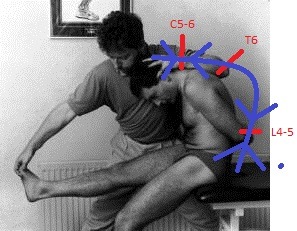
A very interesting subject in neurodynamics is the points of convergence of neural tissue. In simple words, these points are the places in the body where two sides of the the neural tissue cord (either in the spinal cord or in the peripheral nerves) come closer to each other. This is happening when the therapist is extending of flexing the limbs or the spine. And this technique is believed that can play a major role in cases of pain due to nerves' compression somewhere along their course.
The following part is a very short part of Chapter 2 summary of “Clinical Neurodynamics” by Michael Shacklock. You can find a short summary of the whole chapter here, or you can buy the book here.
The spinal cord tends to move towards various specific segments. These areas are termed zones of convergence, and these areas include C5-6 and L4-5. For example, tissues above C5-6 will slide toward this zone, as will tissues below this segment. The midpoint at which tissues diverge is at T6. At this point, tissues below T6 will converge towards L4-5, and tissues above T-6 will converge to C5-6.
Wednesday 7 August 2013
Handicap International

What is Handicap International?
Handicap International is an international, non-governmental organisation, mainly known for its fight against anti-personnel mines and cluster munitions and helping the victims of these unexploded devices. However, its mandate has been extended over the years and today includes providing assistance through work in various fields for people in developing countries with other kinds of disability.
Handicap International primarily focuses on the prevention of disabilities and providing support for people with disabilities by ensuring they can fully take part in social life. The organisation’s interventions are not restricted to long-term development activities. Handicap International also provides support in emergency situations, for instance, in the aftermath of natural disasters and humanitarian crises. Its actions always focus on those suffering from disabilities.
The organisation works as far as possible with the human and material resources available in the country. Its projects are implemented in cooperation with local partners, the objective being to ensure their autonomy in the long-term. All of its actions concentrate on training, raising awareness and the involvement of local communities in its projects.
Tuesday 6 August 2013
Antioxidants - too much of a good thing?
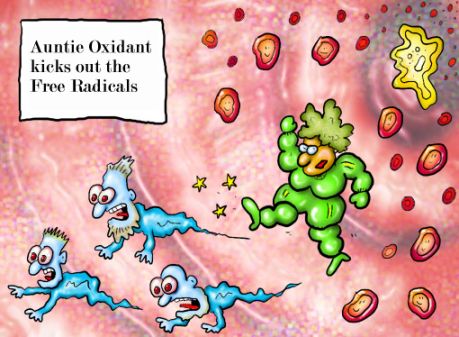
There is recently a lot of discussion done on the controversial effect of antioxidants on health. What is causing this discussion is the fact that the free radicals in our body (that were thought to be a danger for our health) are now found to play an important role in the defence mechanisms of it.
This article on medicalxpress.com discusses a new element on the effect of free radicals in our health. What is emerging is a new view that antioxidants are not a fix for everything, and that some degree of oxidant stress may be necessary for the body to work correctly.
Read it all - it is simple and very interesting.
Saturday 3 August 2013
MIT courses - online for free and from your home

“The idea is simple: to publish all of our course materials online and make them widely available to everyone.” Dick K.P. Yue, Professor, MIT School of Engineering
Have you ever imagined attending an MIT course for free and from your home? Now you can do it! Because MIT has created an online source of some of its most interesting and valuable courses in many different topics such as business, technology, medicine, arts, teaching and more.
Here are a few things to know about MIT OpenCourseWare (OCW) before you begin:
There are more than 2,100 courses on OCW and you might want to begin your exploration in any of these ways:
- Find a course by topic or by department.
- Peruse courses on our Cross-Disciplinary Topic Lists: energy, entrepreneurship, environment, life sciences, and transportation.
- Browse through our other collections: Audio/Video Lectures, New Courses, Most Visited Courses, OCW Scholar, or Supplemental Resources.
- Check out our other featured site: Highlights for High School.
Mechanotransduction - converting mechanical stimulus to chemical activity
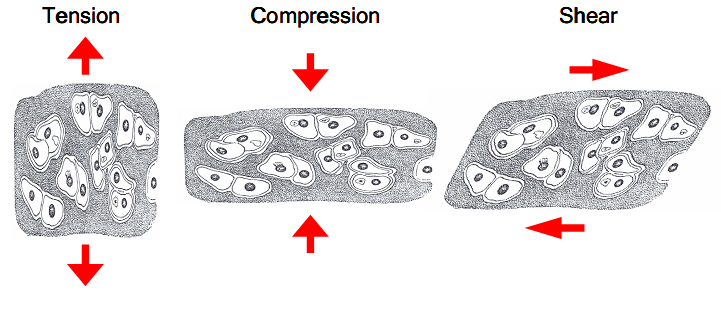
Why mobilization does good to our musculoskeletal system?
I wanted to understand the physiological mechanism behind this simple rule and I learned about mechanotransduction.
This is a biological phenomenon that we should be aware; the phenomenon of mechanotransduction - the mechanisms by which cells convert mechanical stimulus into chemical activity. This law can be and is applied in many physiological processes as well in many therapeutic techniques in Physical Therapy.
I wanted to understand the physiological mechanism behind this simple rule and I learned about mechanotransduction.
This is a biological phenomenon that we should be aware; the phenomenon of mechanotransduction - the mechanisms by which cells convert mechanical stimulus into chemical activity. This law can be and is applied in many physiological processes as well in many therapeutic techniques in Physical Therapy.
Below you can find an overview of the mechanism of mechanotransduction:
"The conversion of physical force into biochemical information is fundamental to development and physiology. It provides a simple means by which cells and organisms can ensure structural stability, as well as a way to regulate morphogenetic movements to generate precise three-dimensional structures. In the vascular system, pressure and shear stress from pumping blood influence the morphology and pathology of the heart and vasculature. Bone is shaped by forces from gravity and muscle contraction. Hearing and touch are based on neural responses to pressure. Inflation and deflation of the lungs regulate their physiology. Coordinated growth of tissues is guided by mechanical forces, and failure of these mechanisms contributes to cancer. Mechanosensitivity in one form or another appears to be a property shared by all cells of the body and by all phyla from mammals to bacteria".
International Association for the Study of Pain
Vision Statement: Working together for pain relief throughout the world.
Mission: IASP brings together scientists, clinicians, health care providers, and policy makers to stimulate and support the study of pain and to translate that knowledge into improved pain relief worldwide.
IASP has established a very useful list of definitions of all types of pain. Every health professional should be aware of this list.
INTECH - open access to books covering the fields of Science, Technology and Medicine
InTech is a pioneer and world's largest multidisciplinary open access publisher of books covering the fields of Science, Technology and Medicine. Since 2004, InTech has collaborated with more than 85545 authors and published 2315 books and 7 journals with the aim of providing free online access to high-quality research and helping leading academics to make their work visible and accessible to diverse new audiences around the world.
Our mission is to give all researchers equal opportunity to share ideas, develop their career and for their work to have impact around the world.
Thursday 1 August 2013
Healthy notions of self through neuroscience knowledge

So... what is NOI?
Neuro Orthopaedic Institute (NOI) Australasia has been in operation for 20 years, with highly qualified instructors working on all continents with multidisciplinary audiences. Organising over 100 seminars a year throughout the world, NOI’s faculty members are active in many conferences, university programmes and other postgraduate education sessions. The company reinvests in education and clinically based research and Noigroup Publications has grown from the demand for resources to support this emerging research.
The essence of NOI
Our vision is to seed ‘healthy notions of self through neuroscience knowledge’ worldwide. There are currently five critical conceptual change issues which underpin this:
Injury or disease does not mean that you feel pain.
The nervous system moves and stretches as we move.
Pain, stress and performance are outputs of the brain.
Knowledge and movement are the greatest pain and stress liberators.
Nervous system plasticity gives new hope and technique.
The biopsychosocial approach, or the merging of the biology of human pain, stress and performance with the psychological and social environment, is the basis of the NOI educational philosophy. It is essentially ‘scientific holism’. Derived mostly from British science, the approach is best typified by Wall and Melzack’s (2005) ‘Textbook of Pain’.
NOI also espouses strong clinical reasoning strategies, again arising from British critical thinking and later, Australian manual therapy.
Assessment and management of the physical aspects of the nervous system and brain sciences with a focus on neuroplasticity - particularly how the brain represents our body - is an important focus.
Overall, the nervous system is a remarkable, mobile, complex, plastic and changeable organ, and this impacts on both acute and chronic injuries and disease. The NOI education system covers acute and chronic musculoskeletal, central and peripheral, and neuropathic pain states.
Mind and its potential: the role of the brain in chronic pain
Mind & Its Potential is a vibrant and stimulating conference experience which will attract 1,000+ delegates! We are committed to bringing together the world's preeminent scientists, researchers, philosophers and creative thinkers in order to offer you an experience second to none.
Mind and its Potential Conference, 2011 at the Sydney Convention & Exhibition Centre.
CHANGE YOUR MIND: CHANGE YOUR BRAIN
Body in mind: the role of the brain in chronic pain
• What role does the brain play in chronic and complex pain?
• How does the brain change when pain persists?
• Can you influence the amount of pain you feel?
• Why does someone who has lost a limb still feel pain? Can the pain be treated?
• What are the broader implications of the research in developing better treatments for people in pain?
Professor Lorimer Moseley, Professor of Clinical Neurosciences & Chair in Physiotherapy, University of South Australia; Senior Research Fellow, Neuroscience Research Australia; Author: Explain Pain and Painful Yarns: metaphors & stories to help understand the biology of pain.
Visit our Website: www.mindanditspotential.com/au
Subscribe! www.youtube.com/user/thinkandbehappy
Read our Blog: blogs.terrapinn.com/happiness
Follow us on twitter: twitter.com/mindconference
Tuesday 30 July 2013
The osteotendinous junction

The osteotendinous junction (OTJ), or enthesis, is the site of connection between tendon and bone and is also called the tendon insertion site. The unique cellular and molecular composition of the enthesis provides a gradual transition from tendinous to bone tissue. The enthesis is virtually divided into four zones: zone one, starting at the tendon side, consists of aligned collagen I fibers and decorin, and exhibits tendon properties only. The second zone contains collagen types II and III, aggrecan and decorin, resembling fibrocartilage composition. Zone three is defined as mineralized fibrocartilage and is comprised of collagen types II and X and aggrecan. Finally, zone four is composed of mineralized collagen type I and is considered to be a bone protrusion, providing a dedicated connection point. The molecular mechanisms responsible for the formation of this gradient are mostly unknown. However, it was demonstrated in the mouse forelimb model that Bmp4, produced and secreted by maturing tendon cells under Scleraxis transcriptional regulation, is responsible for initiation of bone tuberosity outgrowth at a site of tendon attachment. Other studies reveal the essential contribution of muscle contractions on the formation of bone ridge.
source: http://discovery.lifemapsc.com/in-vivo-development/tendons-ligaments/osteotendinous-junction
Dermatomes and peripheral nerves' cutaneous distribution.
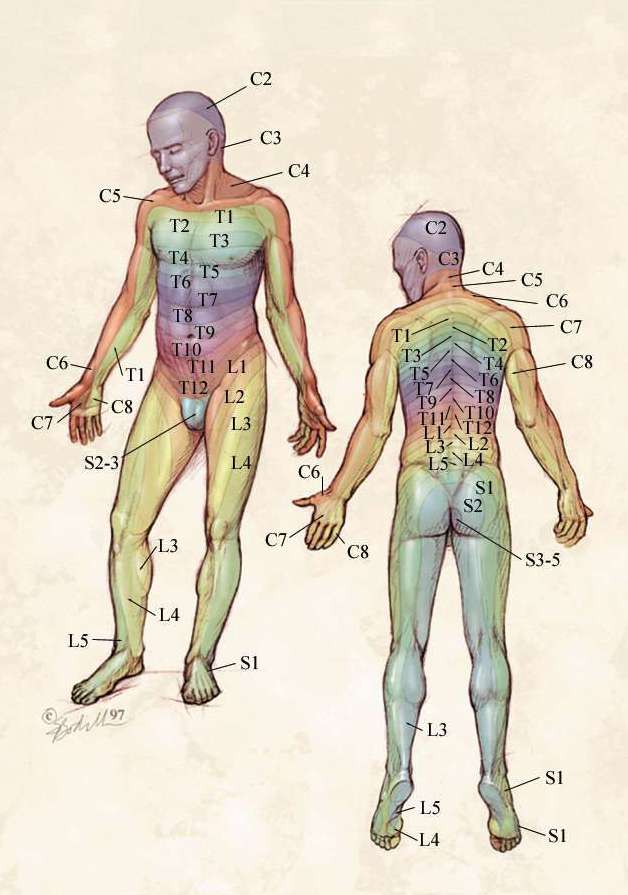
Sensory dermatomes
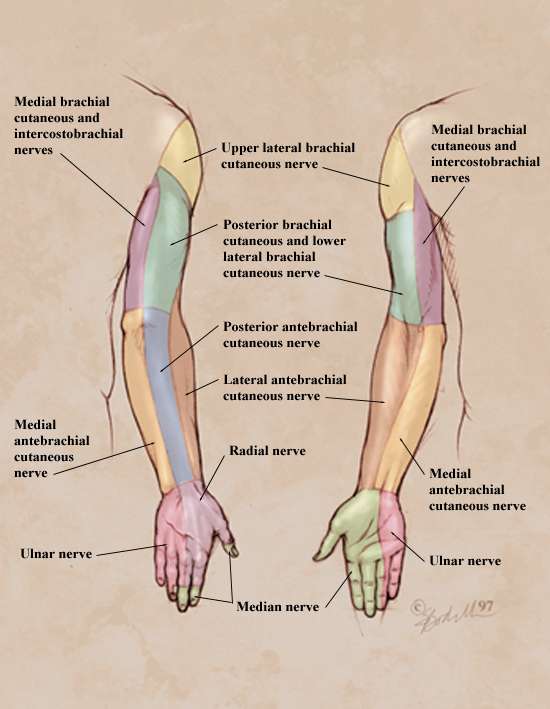
Cutaneous nerve distribution of the upper limb
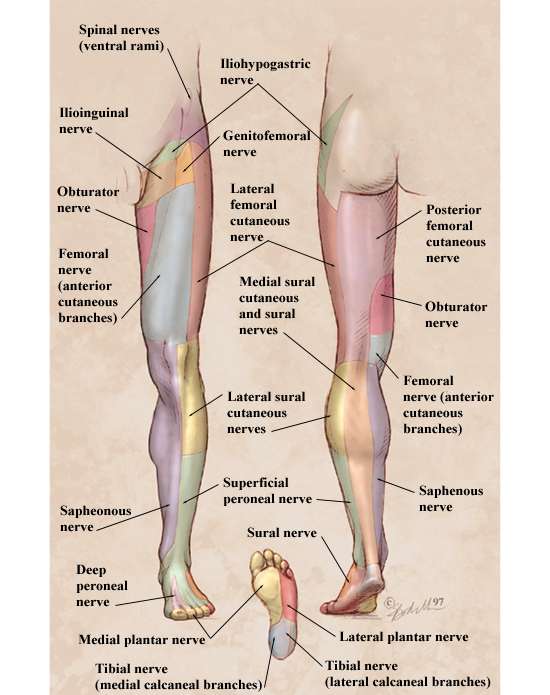
Cutaneous nerve distribution of the lower limb
Friday 26 July 2013
Can you define health?

Can you define health? OK, we all know the definition of health by the World Health Organization. And I totally agree with this definition. But I want something more. I want something that I can apply to my self in practical terms as well to people that I am trying to treat.
The last 4-5 years in my life I came across to an excellent definition of health by a medical doctor specializing in Homeopathy. Dr. George Vithoulkas (introduced to me by Dr. Spyros Kyvelos) gives an excellent definition for health, in my opinion. You should read his article here in order to completely understand his point of view.
I always keep in my mind the following major points:
Health is:
- freedom from pain at the somatic level
- freedom from lust at the emotional level
- freedom from selfishness at the mental level
And a great way to measure health is the degree of creativity of the individual.
- freedom from pain at the somatic level
- freedom from lust at the emotional level
- freedom from selfishness at the mental level
And a great way to measure health is the degree of creativity of the individual.
As Dr. Vithoulkas says "these are rules that nobody can escape from, whether he likes it or not". And I feel blessed that I met this man and his point of view on medicine as a science.
Thursday 25 July 2013
The Resource - Physical Therapy Modalities Manual
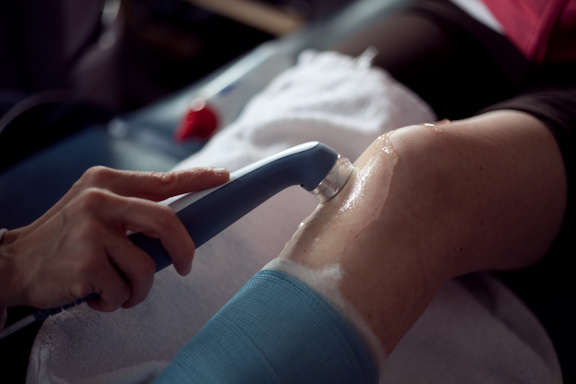
A great modalities manual that explains in simple terms all the modalities used in Physical Therapy. It is true that these modalities are losing ground against manual therapy, kinesiotherapy and other more manual techniques, but it would be wrong to completely deny their use and effect on the human body. Anyhow, a good Physical Therapists should have all the possible tools in his arsenal and use each one when appropriate. Not every body is the same and or responds in the same way to every modality. Sp, the challenge for the Physical Therapist is to recognise and identify which tool can be effective is each case.
Wednesday 24 July 2013
Proper bike posture
With biking becoming more and more famous all over Europe, it is extremely important to know how to properly set your posture.
Read this very interesting article at livestrong.com.
Interactive body

Interactive Body by moveformardpt.com.
Browse by body part to learn how a physical therapist can help you.
Why you should care about the drugs your Doctor prescribes
Watch the video and you will be amazed about this great project. They have taken the data and put it into an online database that allows anyone to look up a doctor's prescribing patterns and see how they compare with those of other doctors!!
Read also this very interesting article on this subject. it gives you a brief overview on the reasons you should care about the drugs your Doctor prescribes.
Neural tissue management

We all learn during our education the Upper and Lower Limps Tension Tests. These tests can be used also as mobilization and treatment techniques.
I recently read a few articles on the usefulness and the effect of these and some similar techniques on nerve related pain in the neck and the limps.
Here you can find a great Randomized Control Trial by the School of Health and Rehabilitation Sciences at the University of Queensland, Australia.
Here ypu have fine a novel protocol to develop a prediction model that identifies patients with nerve-related neck and arm pain who benefit from the early introduction of neural tissue management.
Here you can find a very interesting blog entry on neural tissue management.
Finally, here you can find a treatment approach for carpal tunnel syndrome suggested by http://www.handsonemg.com.
Tuesday 23 July 2013
Can Physical Therapy help Angelina Jolie?
We all heard recently the story of Angelina Jolie and her decision to have a double mastectomy operation in order to minimize the possibilities to have breast cancer.
Did you know that Physical Therapy is recommended after this kind of operation? Dr. Dimitrios Kostopoulos co-founder of www.handsonpt.org is giving a brief talk on why this is true.
AlterG - the anti-gravity treadmill
The video presents a range of patients with different diagnoses using the AlterG - the anti-gravity treadmill:
1. A Parkinson's patient walking safely, allowing her to stay mobile and improve her condition
2. An overweight patient enjoying running for the first time and losing weight
3. A triathlete recovering from an injury and competing again
4. An injured cop recovering from an injury, enabling him to return to his job
I just came across this product. It seems to me that it would benefit these kinds of patients since it allows pain free movements that they would otherwise not be able to do - a fact good for both the musculoskeletal and the neurologic rehab process. This fits very well with the functional rehabilitation a Physical Therapist should focus on.
Monday 22 July 2013
Diagnostic imaging for Physical Therapists
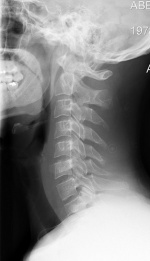
The famous physio-pedia.com has created a wonderful article on diagnostic imaging for Physical Therapists. Read it here.
Meniscal tears

A physical therapists will face these situations quite often in his daily practise. It is useful to know the main types of a meniscal tear and base his treatment plan accordingly.
Wednesday 17 July 2013
NSCA certification for fitness and training

For those Physical Therapists that are interested in focusing in Fitness and Training, I highly recommend this certification.
"NSCA is the worldwide authority on strength and conditioning, that supports and disseminates research-based knowledge and its practical application to improve athletic performance and fitness.
Our History
Founded in 1978, the NSCA has been serving its members by bridging the gap between science and application. Take an online tour of the NSCA’s legacy and learn about the association’s impact on strength and conditioning as both a practice and profession".
Monday 15 July 2013
MovingNaturally Training
When I watched this video I liked very much this idea of regaining our abilities to move naturally. It is true that we leave a life that does not favor natural movement and restricts our body's amazing capabilities. Of course, there are a lot of ways you can follow to train them, but I liked this approach by MovNat.
Subscribe to:
Posts (Atom)



